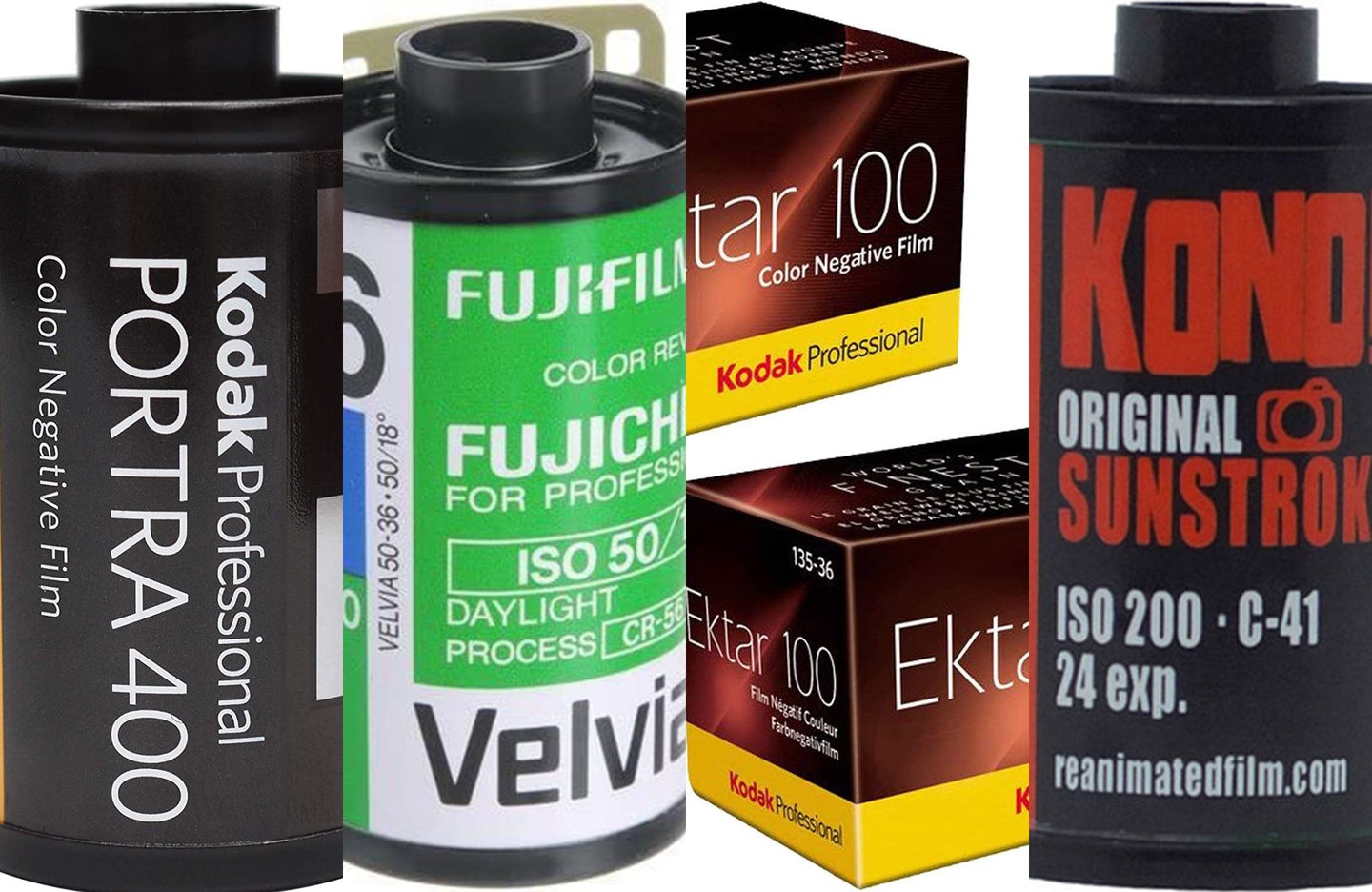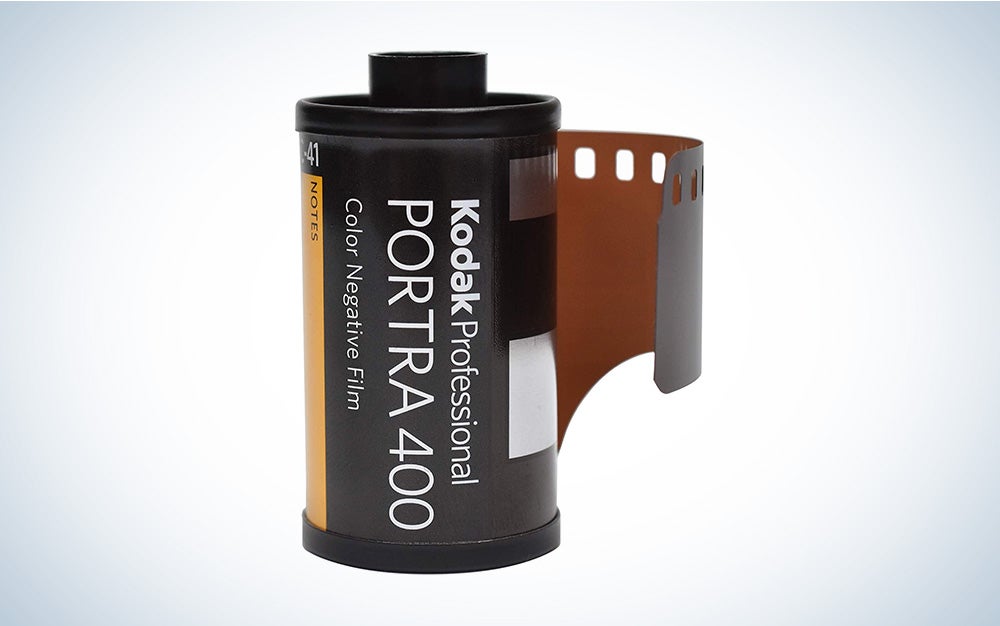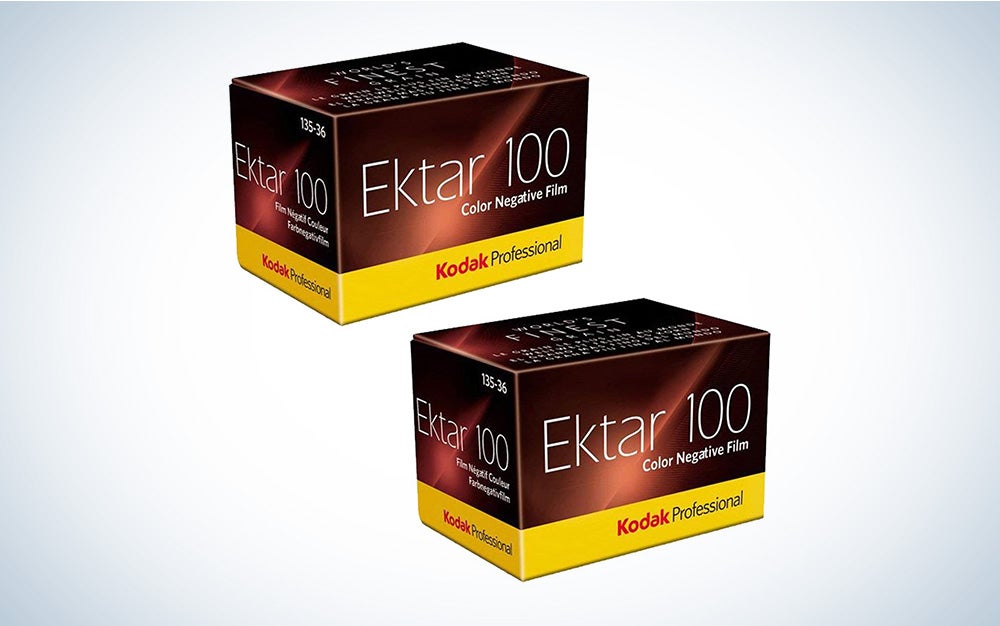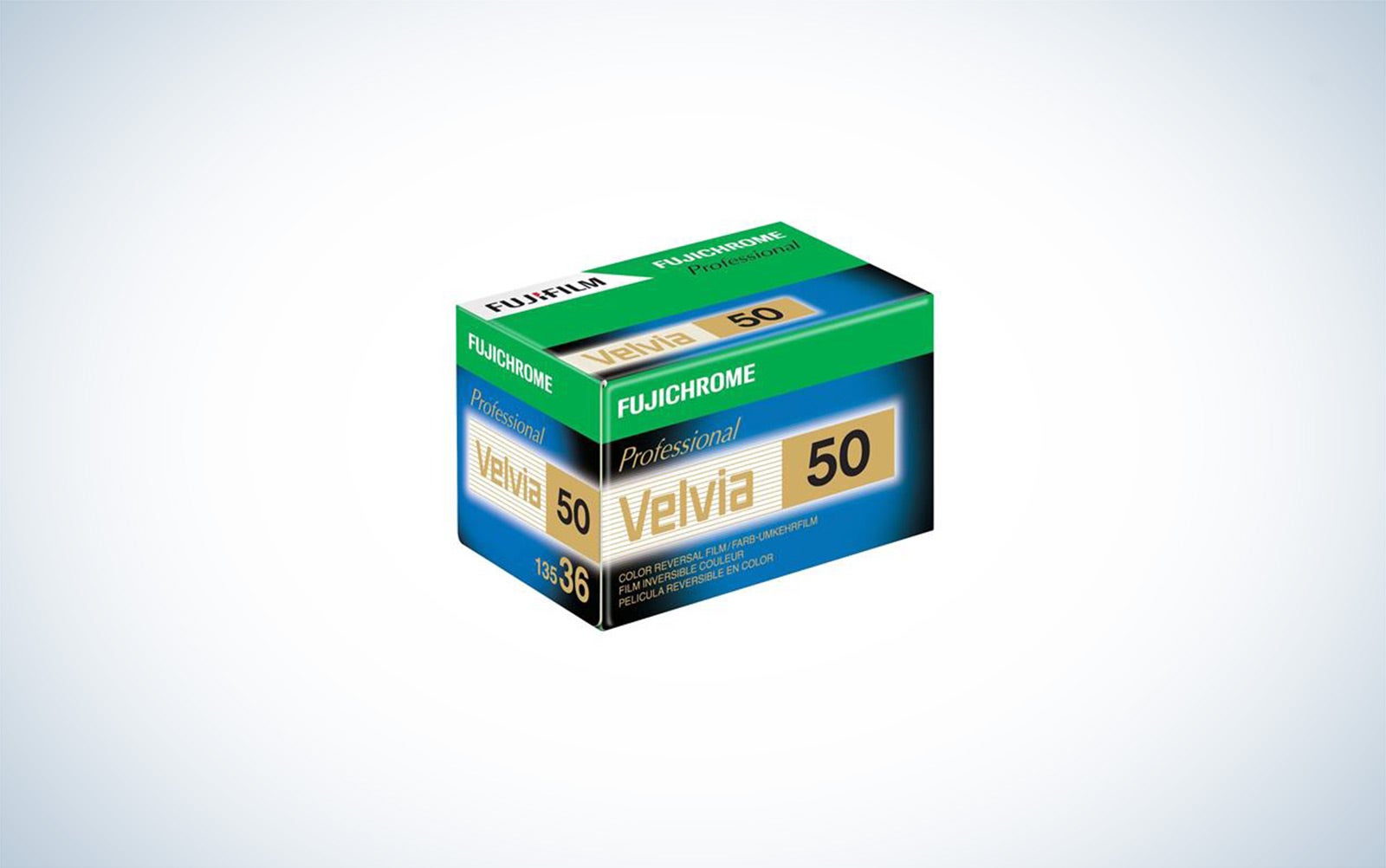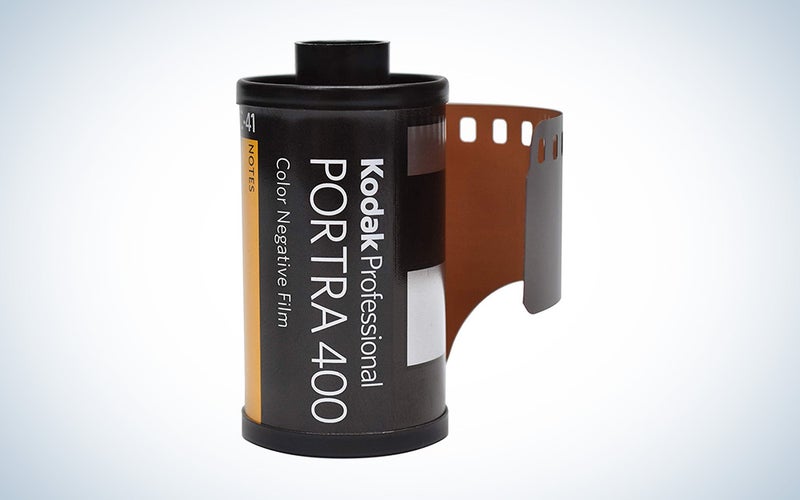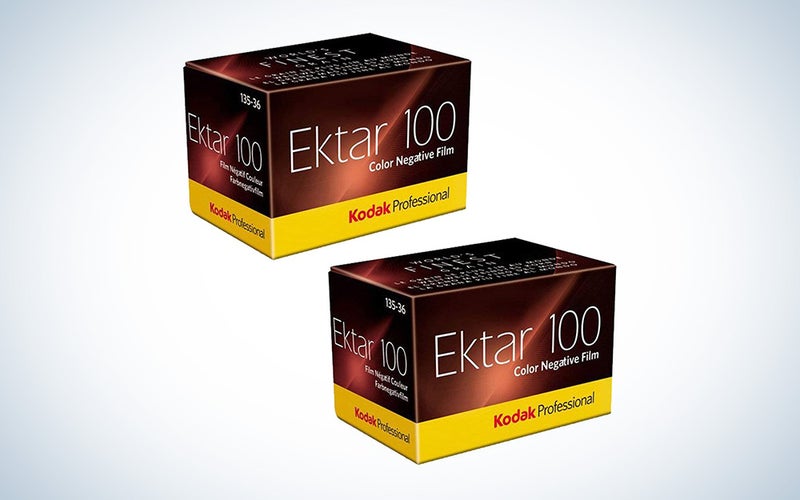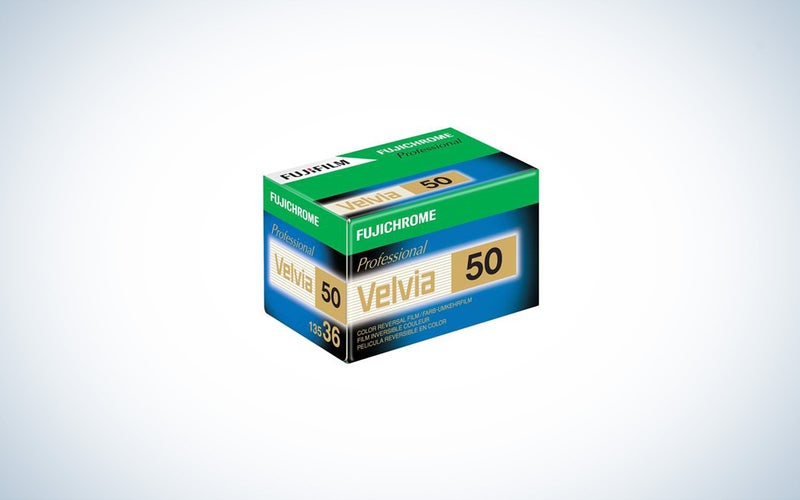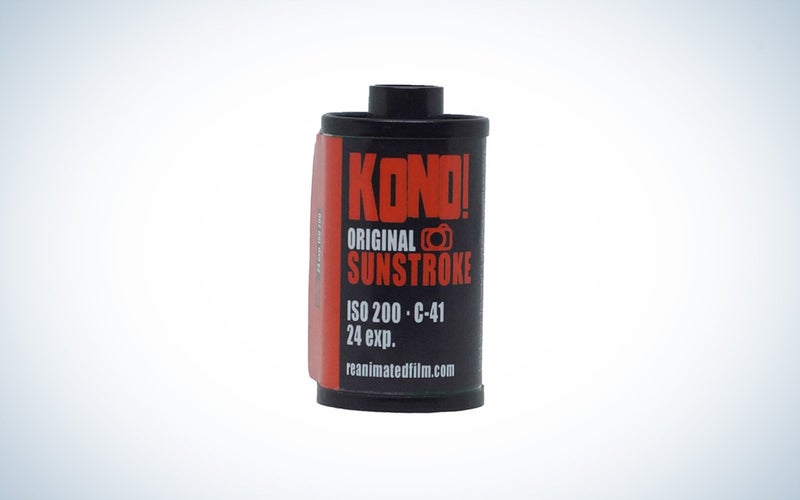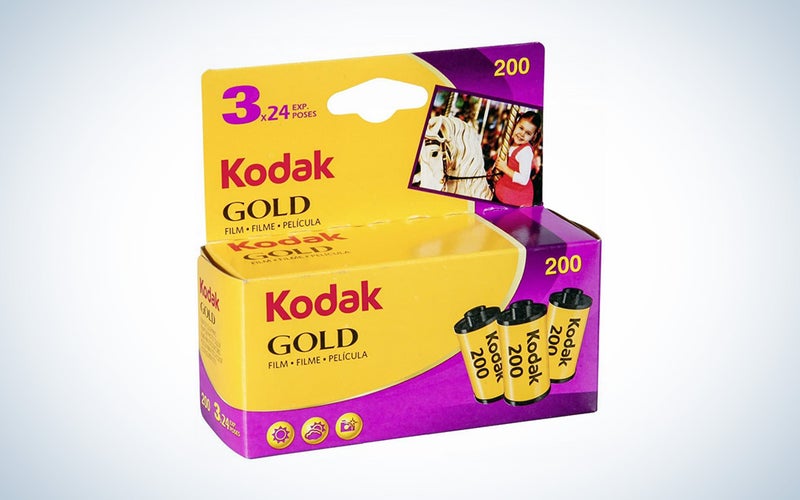We may earn revenue from the products available on this page and participate in affiliate programs. Learn more ›
Color film was one of the most popular photography products in the pre-digital era. If you were born before the early 2000s, chances are the images that you associate with your family memories were all shot on color film. Film comes in a variety of speeds and formats, and selecting the best film stocks for you depends a lot on what you plan to shoot, the time of day you will be shooting, and what camera equipment you will be using. But no matter what you are looking for or your experience level, the best color film will help bring your visions to life.
- Best for portraits: Kodak Portra 400
- Best for landscapes: Kodak Ektar 100
- Best color slide film: Fujifilm Fujichrome Velvia 50
- Best for the experimental photographer: KONO Manufaktur ORIGINAL SUNSTROKE 200
- Best budget: Kodak Gold 200
The best color film: Reviews & recommendations
Best for portraits: Kodak Portra 400
Kodak
Kodak Portra 400 is a popular choice for portrait photographers because of the way it renders skin tones. It’s a versatile film stock that offers a fair amount of leniency when it comes to exposures, making it a great option for photographers who are just getting started shooting film. It’s a bit more expensive than the color rolls you might find on the shelf in a drugstore, but the results are beautiful. Some photographers like to intentionally over or under-expose it to change the look.
Best for landscapes: Kodak Ektar 100
Kodak
This C-41 film stock from Kodak is reminiscent of the vivid colors typically only found in color slide film but at a cheaper price point. This low-speed option has a very fine grain and reproduces color in a way that is closer to what you get with a digital camera. It’s available in both 35mm and 120 so it will work with whatever camera gear you have, even if you’ve stepped up to a medium format film camera.
Best color slide film: Fujifilm Fujichrome Velvia 50
Fujifilm
Fujifilm’s Velvia stock is the best if you are interested in shooting dramatic landscapes, but it’s also an excellent option for capturing vibrant spring and summer days. Color slide film isn’t as lenient when it comes to exposures, is one of the pricier options on the market, and is typically more expensive to process, but in the right lighting conditions, the results are beautiful. Fujifilm has been slowly paring back its film offerings, so if you want to give it a try, we recommend you do it sooner than later.
Best for the experimental photographer: KONO Manufaktur ORIGINAL SUNSTROKE 200
KONO. Manufaktur
This is a film stock made for photographers who prefer things to get a little funky. It is a color-negative film with bright, warm colors. What makes it unique is the light leak effects that come already on the film, no faulty camera is needed. The effect is created by hand using The Reanimator device that Kono developed in-house. It will vary on each frame, giving you unexpected results.
Best budget: Kodak Gold 200
Amazon
This medium-speed, daylight-balanced film is one of the most affordable films you can find. It’s typically sold in multi-packs and averages about $5 per roll. The colors won’t be as vibrant as some of the other film stocks on the market—it’s much more subtle—but when it’s exposed well it does have a very pleasant warm vibe to it. It also comes in 24-shot rolls as opposed to 36, which is handy if you like to change film frequently or it takes you a long time to work a roll through your 35mm film camera.
Things to consider before buying color film
For a variety of reasons, film photography has once again become very popular. Whether you are completely new to shooting film, or an experienced film shooter returning to the medium, there are a handful of things to consider when looking at film stocks.
Color-negative film versus color slide film
Film stocks come in two major varieties—those that are developed with C-41 chemicals and color reversal (or slide film), which is developed by using E-6 processing. Film developed using C-41 will produce a standard negative, while color slide films create a positive version of the film once it is developed. E-6 film is typically more expensive and isn’t as forgiving when it comes to exposures. It can also be difficult to find labs that process slide film. For an interesting effect, color slide film can be developed using C-41 chemicals, and color negatives can be developed using E-6. This is called cross-processing and will shift the colors and increase the contrast of the film.
One of the most appealing aspects of shooting with color-negative film is that it typically is very forgiving when it comes to over-exposures. If you are new to film photography this is helpful because it means that even if you aren’t nailing perfect exposures while shooting, your images will still turn out. It’s one of the reasons that disposable point-and-shoot cameras typically come loaded with a roll of color-negative film. Using a film camera that has automatic metering and a pop-up flash will certainly help keep things properly exposed, but most film stocks are forgiving enough that you will be okay even if you are using a fully manual camera. Slide film offers extremely rich colors but is decidedly less forgiving.
Film size
35mm film is the most popular of film sizes and what you will want to use if your film camera is an SLR, a point-and-shoot, or most rangefinders. Most films also regularly come in the 120 format, which is the correct size if you are shooting with a medium format camera.
Film speed
There are many film varieties and they typically differ in speed and the ways in which it reproduces colors. Film speed, also known as ASA, is similar to setting the ISO on your digital camera. A slow-speed 50 film will need to be used in bright sunny conditions, while a 400-speed film can be shot indoors or outdoors. As film speed increases, so will the film’s grain. The majority of films fall somewhere between 160-800 ASA.
Before loading a roll into your camera you should consider what you will be shooting and what the lighting conditions might be like. If you are planning on shooting your roll of film inside, you will probably want to avoid something with a slow ASA speed and opt for a 400-speed roll of film instead. Underexposed images on film tend to look washed out and grainy.
Color pallet
The other thing to consider when selecting the right film for you is the color pallet. Every film stock renders colors a bit differently. Color slide film is typically known for its bright, saturated colors, for which many shooters consider it the best choice for landscapes. A 400-speed film like Kodak Portra is typically the best film for portraits because of the way it renders skin tones. Consumer films will typically be the best for beginners because of the neutral color reproduction and the cheap price.
FAQs
Q: Is 200 or 400 film better?
Choosing the best film speed has a lot to do with the conditions where you are planning to shoot the roll of film. Film speed (also known as ASA) is comparable to the ISO setting on a digital camera. A film speed with a high ASA will be better suited to use indoors or in low-light situations, while something with a lower ASA will be better to use outdoors in sunny conditions. Generally speaking, a 200-speed film is one you would want to use outside on a sunny day or with a flash. A 400-speed film can be used indoors or outdoors on an overcast day.
Q: What film is the best for night photography?
If you are shooting at night without lights or a tripod you are going to want to pick up a very high-speed film. Most stop at 800, although you can get black and white films up to 3200. If you are planning to use a tripod and make long exposures at night you can use a film with a lower speed and still get results.
Q: Is slide film better than negative?
Slide film was traditionally used by nature photographers to get vibrant colors in their scenes. It’s typically more expensive than negative film, isn’t as lenient when it comes to exposures, and is processed using the more expensive E-6 chemicals. Color negatives or C-41 film is more widely available, less expensive, and typically less expensive to process. You can over-expose negative film by several stops and still get a usable image. In the end, though, the best film stock is the one you enjoy using the most.
Final thoughts about color film
If you are just getting started with film photography, choosing an inexpensive film stock with an ASA range between 200-400 is an excellent place to start. As you get more comfortable with your camera and shooting color film you should experiment with lower-speed films, color slide film, and more experimental film stocks. This type of photography is a fun and versatile way to create beautiful memories.
- Best for portraits: Kodak Portra 400
- Best for landscapes: Kodak Ektar 100
- Best color slide film: Fujifilm Fujichrome Velvia 50
- Best for the experimental photographer: KONO Manufaktur ORIGINAL SUNSTROKE 200
- Best budget: Kodak Gold 200
Why trust us
PopPhoto has a long history of delivering the opinions of some of the sharpest and most prolific camera dorks the world has to offer. Since 1937, we’ve been reviewing cameras, providing wisdom from well-known photographers, and generally just nerding out about all that goes into making great pictures. Our current crop of writers and editors have decades of professional photography and camera writing experience among them. Collectively, we’ve probably shot with just about every camera and lens combo you can imagine—as well as some obscure stuff you may not even know about. Remember the Casio Tryx folding camera? PopPhoto does.
We also get that buying a camera is a big decision, which is why we’re dedicated to helping folks choose the right one (or, in our case “ones”) for their needs. Case in point: Handing over top dollar for an expensive rig may leave you unsatisfied if it doesn’t fit your preferred shooting style. Sure, a $6,000 sports-oriented DSLR can capture landscapes, but do you really need to do it at 30 frames-per-second? No, you don’t.
